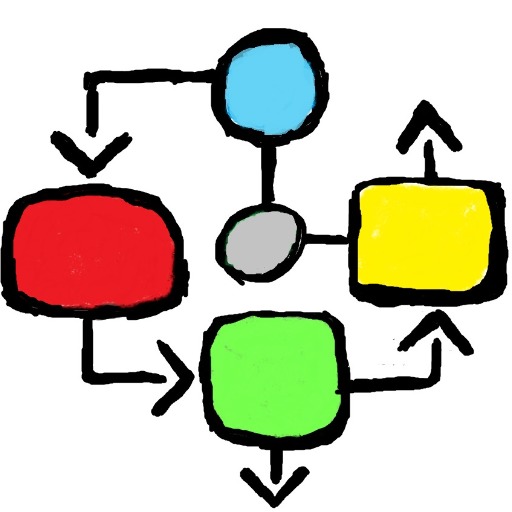Data Interpretation-AI-powered data interpretation tool.
AI-powered insights for your data.
Upload an image of a statistical analysis and we'll interpret the results: linear regression, logistic regression, ANOVA, cluster analysis, MDS, factor analysis, and many more
Can you help me interpret this ANOVA table?
What does this cluster analysis result mean?
How should I read these MANOVA results?
What can I infer from this contingency table?
Related Tools
Load More
Diagrams & Data: Research, Analyze, Visualize
Complex Visualizations (Diagram & Charts), Data Analysis & Reseach. For Coders: Visualize Databases, UserFlows, ERD, PlantUML and More. For business & data analysis: Mindmaps, Flowcharts and more.

Plot AI
Specialized in the Art of Data Visualization, with a Focus on Bioinformatics Applications. Now comes with DNA Barcode Generator. **constantly updating**

Statistics Stats
🔷#𝟏 𝐏𝐞𝐫𝐬𝐨𝐧𝐚𝐥𝐢𝐳𝐞𝐝 𝐒𝐭𝐚𝐭𝐢𝐬𝐭𝐢𝐜𝐬 𝐓𝐮𝐭𝐨𝐫 𝐚𝐧𝐝 𝐓𝐨𝐨𝐥🔷

Data Analysis & Report AI
Your expert in limitless, detailed scientific data analysis and reporting

Advanced Data Analysis
Advanced data analysis assistant offering insights and guidance.
Excel analysis
Analyze your excel spreadsheet
20.0 / 5 (200 votes)
Detailed Introduction to Data Interpretation
Data Interpretation is designed to assist users in understanding and making sense of statistical analyses and data-driven insights. The primary function is to interpret complex statistical results, such as ANOVA, cluster analysis, factor analysis, and more, transforming them into comprehensible information that can be applied to real-world decisions. Data Interpretation is especially useful in academic research, business analytics, healthcare studies, and any domain where data-driven decisions are crucial. For example, in a scenario where a researcher has conducted a Multivariate Analysis of Variance (MANOVA) to determine the effect of different teaching methods on student performance across various subjects, Data Interpretation would help the researcher understand the implications of the statistical output, such as the significance of the teaching methods on the different outcomes, and suggest additional analyses if needed.

Core Functions of Data Interpretation
Statistical Analysis Interpretation
Example
A company performs an ANOVA test to compare the mean sales performance of three different regions. Data Interpretation would help the analyst understand if the differences in means are statistically significant, explaining p-values, F-statistics, and providing insights on which regions differ significantly from others.
Scenario
In business, understanding regional sales differences can help in tailoring marketing strategies to boost performance where needed.
Data Visualization Explanation
Example
A marketing team creates a cluster analysis to segment customers based on purchasing behavior. Data Interpretation can explain the meaning of the clusters, the distance between them, and how this information can be used to target specific customer groups with tailored marketing strategies.
Scenario
This function is critical in customer relationship management (CRM), where visualizing and understanding customer segments lead to more effective marketing campaigns.
Recommendation of Further Analyses
Example
A healthcare researcher analyzing patient data using factor analysis discovers several underlying factors influencing patient recovery times. Data Interpretation could suggest a follow-up regression analysis to quantify the impact of these factors on recovery time.
Scenario
In healthcare, understanding the impact of various factors on patient outcomes can guide clinical decisions and improve patient care.
Ideal Users of Data Interpretation
Academic Researchers
Researchers in fields like psychology, sociology, economics, and education often deal with complex statistical data. Data Interpretation helps them decipher statistical results, making it easier to draw meaningful conclusions and publish their findings with confidence.
Business Analysts and Data Scientists
Professionals who need to make data-driven decisions based on statistical analyses and visualizations can greatly benefit from Data Interpretation. It supports their ability to translate data into actionable insights, which is essential in making strategic business decisions.

Guidelines for Using Data Interpretation
1
Visit aichatonline.org for a free trial without login, no need for ChatGPT Plus.
2
Prepare your data and the context. This includes variables, types of analyses you require, and any hypotheses you have. Be clear on your research questions.
3
Submit your data for interpretation. Choose from a wide range of statistical methods, like ANOVA, MANCOVA, or cluster analysis, depending on your needs.
4
Review the insights provided. These may include explanations of significant results, visual representations, and interpretations that are directly linked to your research question.
5
Iterate based on feedback. Make adjustments to your analysis by clarifying your variables or diving deeper into specific aspects, if necessary.
Try other advanced and practical GPTs
Supertools GPT Finder
AI-Powered GPT Finder for Your Needs

Figmo
AI-Powered Plugin Development for Figma

漫画背景メーカー(Manga Background Maker)
AI-powered backgrounds for manga creators.

Photorealistic PRO
AI-powered, photorealistic image creation.

Documentary Style Images
Create stunning documentary-style images with AI precision.

UpScaler
AI-Powered Image Enhancement.
Scholarly Gap Finder
AI-Powered Research Gap Identification Tool.

Copy Edit Pro
AI-powered copyediting, tailored for journalism.

Consulting Expert for Strategy and Transformation
Transform Business Strategy with AI Power.

Apache Kafka Expert
AI-powered Kafka expertise at your fingertips.

Image Generator Tool
AI-driven creativity for everyone.

Free Character Consistency AI Tool - Snowballai.io
AI-Powered Character Design Consistency.

- Academic Research
- Data Visualization
- Hypothesis Testing
- Pattern Detection
- Survey Analysis
Q&A About Data Interpretation
What kind of data analyses can Data Interpretation handle?
Data Interpretation supports a wide range of analyses including ANOVA, MANOVA, cluster analysis, contingency tables, factor analysis, and more. The tool provides insights on results, statistical significance, and further recommendations.
How can I use Data Interpretation in my research?
You can use Data Interpretation to analyze experimental data, survey results, or observational studies. The tool can help clarify patterns, differences among groups, and relationships between variables, guiding your research conclusions.
What is the best way to prepare my data for analysis?
Ensure that your data is clean and well-organized. Identify key variables, understand their types (e.g., categorical, continuous), and define any hypotheses or research questions you are addressing.
Can Data Interpretation help with academic writing?
Yes, the tool can interpret complex statistical outputs, providing explanations that help clarify results for your academic papers, theses, or research reports.
Does Data Interpretation provide visual representations of the data?
Yes, depending on the analysis, the tool can generate charts, graphs, and other visual aids that help illustrate your findings, making them easier to understand and present.